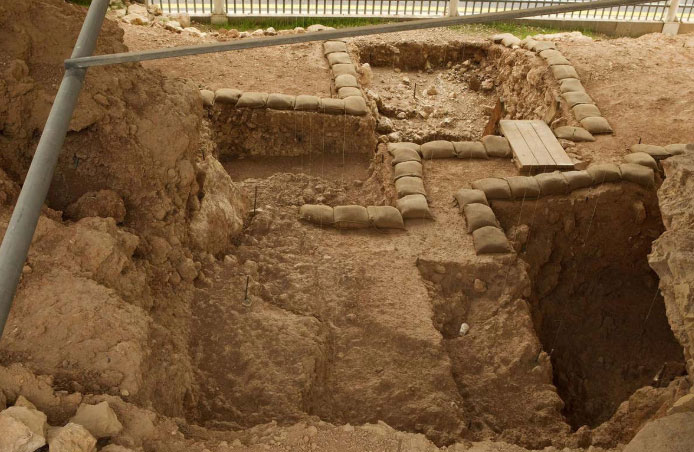How did the ancients store and consume animal bone marrow?
Ancient humans used to store bones from animals so they could eat their marrow later. This is the first evidence that these populations delay the use of food and they can plan ahead.
'This has changed the modern perception of our ancestors because it is believed that early hominids were incapable or unaccustomed to storing food to eat , ' says Bark. Barkai at Israel's Tel Aviv University.

Qesem Cave (Israel) where ancient people stored animal bones for marrow extract.
Barkai and colleagues analyzed more than 80,000 animal bone samples from the Qesem cave in Israel to determine exactly how the ancients had access to bone marrow. People lived in this area during the Middle Ages, about 200,000 to 400,000 years ago.
The team discovered characteristic cuts on 78% of the bone surface, identifying the slow bone storage and consumption of the ancients. These signs are the result of efforts to remove dry skin from preserved bones.
The researchers also examined how the bone marrow degenerated over time to determine whether it was nutritionally beneficial when eaten. They exposed 79 bone fragments from the red deer genus under natural outdoor conditions, as well as an indoor simulation environment meant to reproduce under the conditions in which they were found.
The team found that the skeletal bones could withstand nine weeks of exposure in the fall without losing a significant amount of nutritional value, but the fat in them deteriorated after the third week of treatment. spring and indoors.
This is the first archaeological and experimental evidence on preservation and consumption of food during the Middle Ages. It shows that ancient humans were capable of cognition and prediction. 'This gives us a view of the ancients very similar to us today and is different from some primitive creatures at the time,' Mr. Barkai said.
Bone marrow is rich in fat and is an important food source for communities who have limited access to carbohydrates and whose diet depends largely on animal products.
The collection and storage of animal bones for bone marrow consumption has also been observed in modern Nunamiut communities in Alaska, where bones are stored during the winter.
- Bone marrow transplant to treat AIDS
- Prehistoric gourmets are no less modern
- HIV virus can hide in the bone marrow
- Reconstructing bone from bone marrow cells and carbon materials
- Generating jaw bone from stem cells
- First implantation of heart and bone marrow transplantation
- The 42-year-old man is cured of AIDS
- Bone marrow and stem cells for children
- Create sperm from bone marrow
- Flowers made from animal bones
- Stem cells in the bone marrow can treat eye disease
- Two more people escape the HIV virus
 Discovered an ancient centipede fossil 99 million years old
Discovered an ancient centipede fossil 99 million years old Discovered bat-like dinosaurs in China
Discovered bat-like dinosaurs in China Discovered a 200-year-old bronze cannon of the coast
Discovered a 200-year-old bronze cannon of the coast Discover 305 million-year-old spider fossils
Discover 305 million-year-old spider fossils